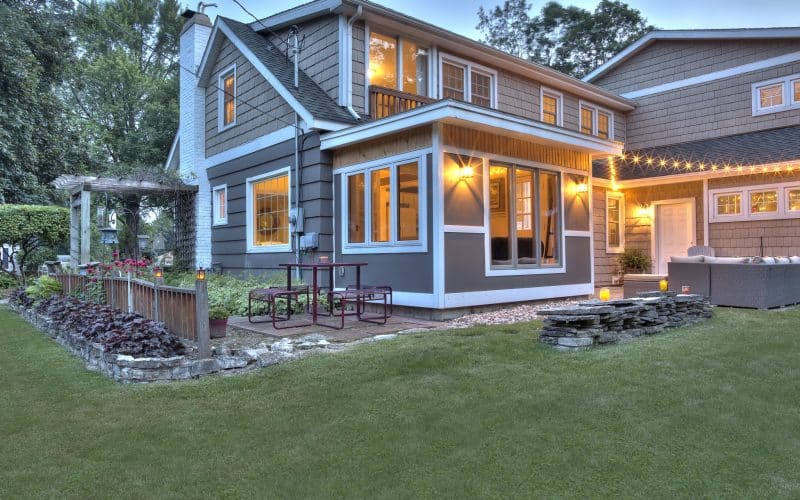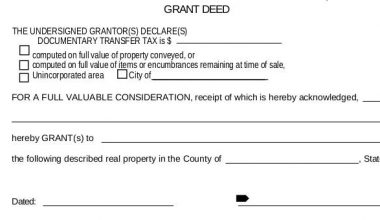Let’s discuss a modular vs. a manufactured home by placing them side by side with one another. A modular home is a home that is partially built by the company before taking it to the owner’s location to be put together and made ready to live in. This is compared in this post to a manufactured home, which is constructed in the factory and then transported on its mobile wheels to the owner’s location. We will also be going into the details of the modular vs manufactured homes cost, meaning what each home can cost separately to the owner, then how to go about their financing, which of them is actually the best, and lastly, the differences between modular vs a manufactured home.
Modular vs Manufactured Home
Basically, when placing side by side a modular vs manufactured home, you will find out that both a modular and a manufactured home (also known as mobile homes) are prefabricated structures. This means that they construct these homes either partially or fully in an off-site factory.
From a legal standpoint, the primary or basic difference between a modular vs manufactured home is that they hold modular homes to the same local, as well as state, and regional building codes that on-site homes require. Meanwhile, they hold a manufactured home to a federal code set by the Department of Housing and Urban Development (HUD).
Obviously, this legal distinction doesn’t tell us much about the homes. So, what are the striking differences between modular vs manufactured homes? Let’s find out below. But, let’s look at what these terms mean independently first.
Modular Homes
A modular home is a house that its builders partially constructed in a factory and ship to the homeowner’s lot, where they piece it together, put it on a foundation, and it’s ready. Just like traditional homes, modular homes are on permanent foundations and, most of the time, have full basements. The construction of a modular home anywhere must comply with local building codes and standards in the area where you place the home.
The building process differs a bit from that of traditional homes. You will find it difficult to identify a modular home just by looking at it. They can come in all sorts of floor plans and designs. Modular homes have values that tend to go up or down right along with the rest of the housing market. Also, many banks and lenders offer financing contracts on modular homes, meaning that buyers will typically have a good range of mortgage options when the time to make a purchase comes.
Manufactured Homes
These homes are also known as mobile homes or trailers. They are houses that the builders completely construct in a factory and build on a fixed, steel chassis (rather than a permanent foundation). They construct these homes with wheels, which you can detach after towing to the home site. You can either privately own or lease this home to the homeowner. Construction on a manufactured home must comply with building codes set up by HUD, which is also one of the primary ways to identify a manufactured home.
New manufactured homes don’t always look like the double-wide trailers you might be picturing. They may not be as customizable as site-built homes, but you can build this home with a variety of architectural styles, floor plans, and add-ons.
Another popular misconception about manufactured homes is that they are unsafe or poorly built. Note that with the passing of the National Manufactured Housing Construction and Safety Standards Act of 1974, HUD began requiring stringent construction and safety standards for all HUD-certified manufactured homes. It’s important you know that manufactured homes were built before June 15, 1975, which is when the law went into effect and they were not considered compliant with the HUD code.
Modular VS Manufactured Home Cost
While comparing the home costs or cost of a modular vs. manufactured home, you have to take into consideration a lot of things, like materials for its construction. A modular home typically costs the same as a traditional site-built house. However, the cost varies depending on the size and your location.
The builders construct manufactured homes in parts in factories and then transport them to the site on their own wheels. These wheels can never be removed, compared to modular ones. This typically means that these wheels for transport add to the cost. Because manufactured homes are not customizable, buyers are able to select from a range and receive their house within days.
Understanding Modular Vs Manufactured Home Cost
Factories construct modular homes under controlled conditions. The home parts are put on transport on flatbed trucks, which the builders assemble using cranes. They are also highly customizable to the buyer’s needs and they generally take 8 to 14 weeks to construct properly.
Manufactured homes are smaller than modular homes, and you build them only on a chassis. They are also transportable. The average size of a new manufactured home was 1515 square feet. Basically, the size, plan, how easily transportable, and to what location typically entail a modular vs. a manufactured home cost. Modular homes are the same size as site-built homes. On average, a manufactured home cost $62,800 or $41.45 per square foot.
Modular Vs Manufactured Home Financing
Financing a modular vs a manufactured home or even any other type of home is challenging. But it can be especially hard for a new homeowner. It’s no longer common for buyers to make a 20% down payment on the purchase price. This is because many public and private organizations tend to help buyers who have less than 5% available for a down payment.
New buyers should know the responsibilities that come with owning a home, and these apply to manufactured homes too. Maintenance costs are part of a monthly budget along with the “rent” for the land the house sits on, property taxes, and insurance. The largest cost will be buying and financing a mobile or manufactured home. Manufactured financing is different than for a standard home loan. But various programs can make it easier to qualify.
Now the biggest difference is that financing loans for mobile and manufactured homes vs modular ones are only for the home itself, not the land it sits upon (for manufactured homes). The community usually owns the land and leases it to homeowners. That’s the “rent” I referred to above.
“Chattel loans” are loans for mobile home financing. These are home-only loans and are technically not real estate loans. It’s just a personal property loan and is also available if you already own the land. This is because if you own the land, then you just need to borrow money to buy a physical home. Financing the purchase of either a manufactured home or vs modular home is much easier than financing a modular and a traditional one.
Understanding Modular Vs Manufactured Home Financing
Financing here depends on the lender, but the minimum credit scores for the options of homes we are discussing in this post range from 580 to 650. Any score higher than 650 should get slightly better terms. However, scores lower than 580 will not qualify for a loan at all.
You should ask yourself questions like, where will you put the house? because the loan will likely be for the home only. So, you’ll need to either buy the land for it, perhaps through another loan, or rather, rent some land through a mobile home community. Renting land can mean you will not be eligible for some loans. Also, bigger homes could possibly, not be eligible for some loans. This is because buying a double-wide home that costs $100,000 or more is not acceptable on an FHA loan. The maximum loan amounts available, however, vary by the type of home you are buying.
It’s important that you also compare lenders, the type of loan you are taking out, and how fees and interest rates vary among many lenders.
Which is the Best Between a Modular Vs Manufactured Home?
From most home buyers’ perspectives, the most important difference between modular vs manufactured homes is that while modular homes have the potential to increase in value over time, manufactured homes do not. This is because they tend to follow local real estate market trends. However, choosing the best between modular vs manufactured homes largely depends on the individual homeowners and their preferences.
Although people misplace the two homes and get confused with them, they still both serve a good purpose. So, with the differences below, you can compare which home is the best and works for you. This is because choosing entails your budget and what’s suitable for you at that time
The Differences Between a Modular Vs Manufactured Home
There are striking differences between a modular and manufactured home and they include the following below
- Manufactured homes and mobile homes are always under regulation by the Housing and Urban Development division of the federal government.
- According to HUD, a factory-built home prior to June 15, 1976, is a mobile home or modular one, and one built after June 15, 1976 (when the HUD code was first established) is a manufactured home.
- Both modular homes and manufactured homes are prefabricated structures, built in a factory on a permanently attached chassis before being transported to the site. A mobile home, on the other hand, is built to the same local, county, and state building codes as a site-built home.
Similarities Between Modular and Manufactured Homes
In 2023, it is smart to invest in either of these homes. This is because of the reduced rates on real estate that the pandemic brought. However, our concern here is the similarities between a modular and manufactured home in the form of an intima. While a lot of people are currently mistaking the two terms, there are still more similarities that cause confusion between these two, and they include the following below
Understanding the Similarities Between a Manufactured Home and a Modular Home
Similarities between a manufactured and modular home include the following below
- The homes are under factories that take environmental control seriously. This means you never have to worry about your building materials getting wet by weather changes.
- They are stable structures because they must hold up to transport to the final destination. Some independent studies of homes after natural disasters (tornadoes, hurricanes) exist. The factory-built homes have quite a bit less damage than dwellings built on site.
- They basically assemble these homes at the site by local contractors.
- This assembly at the home site lasts only a few hours to a few days instead of months like site-built homes.
- Because the factories build so many of these modular and manufactured homes, they produce very little waste. Waste reduction helps keep prices low and, likewise, helps the environment. Unlike site-built homes that have dumpsters for their waste, a typical factory-built home only produces enough waste to fill a 55-gallon trash can.
- They are also more cost-effective than “site-built” homes.
Differences between Modular and Manufactured Homes
In this part of this article, modular vs. manufactured home differences, we will simply compare the differences between these two homes. This is because people continue to mistake them because of their good similarities, which doesn’t mean they are the same. This post will outline the various differences between a modular vs a manufactured home.
The Differences between a Modular Home Over a Manufactured
The major difference between a modular home and a manufactured one include the following
- They must always be at the exact same local, state, and regional building codes as homes built on-site and are also covered by the builder’s warranty.
- Banks: modular homes receive the same treatment by banks as homes built on-site. They are easy to finance and refinance.
- They really appreciate over time, much the same as site-built houses.
- Each home must be on inspection and get approval by local inspectors on site, as well as in the factory during production.
- A modular home can be in any size, shape, or floor plan, just like a traditional home.
- These homes are stronger than homes built on-site due to the fact that they must withstand the struggles of over-the-road transport.
- You can customize them to the individual customer’s taste.
- A modular home takes about four to eight weeks to construct at the factory.
- It sure does save money on utility bills when compared to a site-built home due to its energy-efficient construction.
There Are Differences Between a Manufactured Home and a Modular One
The most common difference between a manufactured home vs modular ones is:
- They must conform only to the Housing and Urban Development (HUD) code. which allows them to be anywhere in the country. Therefore, since this is a federal and not a local code, it is illegal for a local jurisdiction to prohibit their use on private property.
- An inspection of a manufactured home takes place in the factory, which is why they do not have to be structurally inspected by a local inspector.
- Each home is manufactured in sections at factories.
- They rarely have more than one story.
- You can place a manufactured home on either a conventional foundation or even on “in-ground” piers or pads.
- They are “mobile”. which means that they transport it to the site on their own wheels, attaching it to the steel frame under the home.
- The steel chassis remains with the home as part of the floor system.
- You can place a manufactured home on the property that others own, like a trailer park lot that is leased by the homeowner.
- Manufactured homes are a separate lending category from modular and on-site built homes.
Conclusion
Home financing, especially financing the home cost of a modular vs. manufactured home, will continue to be a problem in real estate. However, for a modular vs manufactured home, there are several differences and similarities in connection to both terms, but I advise you clearly understand both terms before setting a deal to buy either of the homes so that you can know exactly what’s best for you, your family, your need and your financial position.
FAQs
Do Modular Homes Last Long?
According to local zoning standards and restrictions, it will last as long as, if not longer than, a typical dwelling.
How much do you have to put down on a modular home?
If you want to finance your modular home with a mortgage, you’ll need to put down 20% of the home’s value to increase your chances of getting approved.
What's the difference between modular and manufactured homes?
The primary legal distinction between modular and manufactured homes is that modular homes must adhere to the same local, state, and regional building codes as on-site homes, whereas manufactured homes, must adhere to a federal code established by the Department of Housing and Urban Development (HUD).






